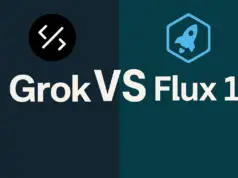OpenAI’s continuous pursuit of cutting-edge language models has led to the emergence of GPT 4.5, sparking curiosity and discussions within the AI community.
In this article, we delve into the comparison between GPT 4.5 and its predecessor, GPT 4, exploring their nuances and potential implications.
Read: GPT-5 vs GPT-4
Unraveling GPT 4.5: A Bridge to Efficiency
GPT 4.5 positions itself as a transitional model, bridging the gap between GPT 4 and GPT 3.
OpenAI’s intention with GPT 4.5 appears to be centered on enhancing the model’s speed and reducing operational costs, crucial aspects in the world of advanced AI.
Although specific details about the improvements remain undisclosed, the release includes specialized versions like GPT 4.5 Turbo, fine-tuned for efficient chat interactions.
Reference: (83) Open AI JUST RELEASED GPT 4.5 (GPT 4.5 Release Explained) – YouTube
GPT 4: Pushing Boundaries of Language Models
GPT 4 stands as OpenAI’s most advanced language model to date, boasting improvements in safety, efficacy, and multimodal capabilities.
It accepts both text and image inputs, delivering text outputs that demonstrate human-level performance across professional and academic benchmarks.
Notably, GPT 4 exhibits enhanced reliability, creativity, and collaboration compared to its predecessor, GPT 3.
A key distinction lies in the model size, with GPT 4’s (rumored) 1 trillion parameters surpassing GPT 3’s already substantial 175 billion parameters.
The increase in parameters indicates a significant leap in the model’s capacity to understand and generate complex responses.
GPT 4.5 vs GPT 4: Core Differences Unveiled
When examining the core disparities between GPT 4.5 and GPT 4, the focal point revolves around model size and training data.
GPT 4.5 adopts a smaller model size, resulting in faster response times and reduced resource consumption.
This reduction is attributed to a narrower knowledge base and contextual understanding derived from a less extensive training dataset¹.
However, the trade-off becomes apparent in accuracy. GPT 4.5 exhibits limitations in handling longer text passages, maintaining coherence, and generating contextually relevant responses.
Notably, it tends to make more factual errors and logical inconsistencies, particularly in complex or novel topics.
Choosing Between GPT 4.5 and GPT 4
The decision to use GPT 4.5 or GPT 4 hinges on specific needs and preferences. GPT 4.5 offers a swift and cost-effective solution for text generation, albeit with reduced accuracy.
On the other hand, GPT 4, with its larger model size, delivers superior reliability and accuracy at the expense of response time and computational resources.
GPT 4-Turbo strikes a balance, providing advanced capabilities with faster response times, and catering to interactive applications.
Conclusion: Navigating the AI Landscape
In conclusion, GPT 4.5 and GPT 4 present two formidable options for text generation, each with its unique strengths and weaknesses.
As users navigate the AI landscape, the choice between these models depends on the specific requirements of a given task. GPT 4.5 prioritizes efficiency, while GPT 4 leans towards accuracy and reliability.
The compromise lies in GPT 4-Turbo, offering a blend of speed and quality. The decision ultimately rests on striking the right balance for your particular use case.
Note: The referenced text (transcript) provides additional insights and context into the ongoing discussions surrounding GPT 4.5, contributing to a comprehensive exploration of the topic.







